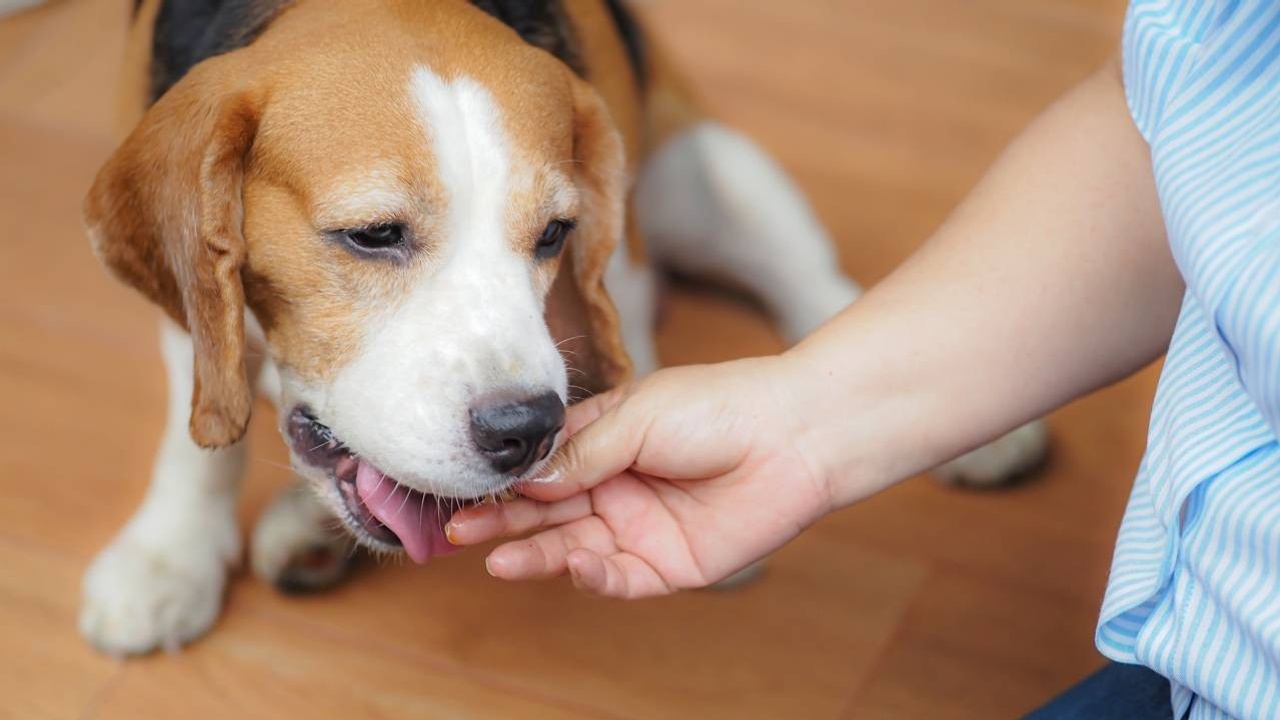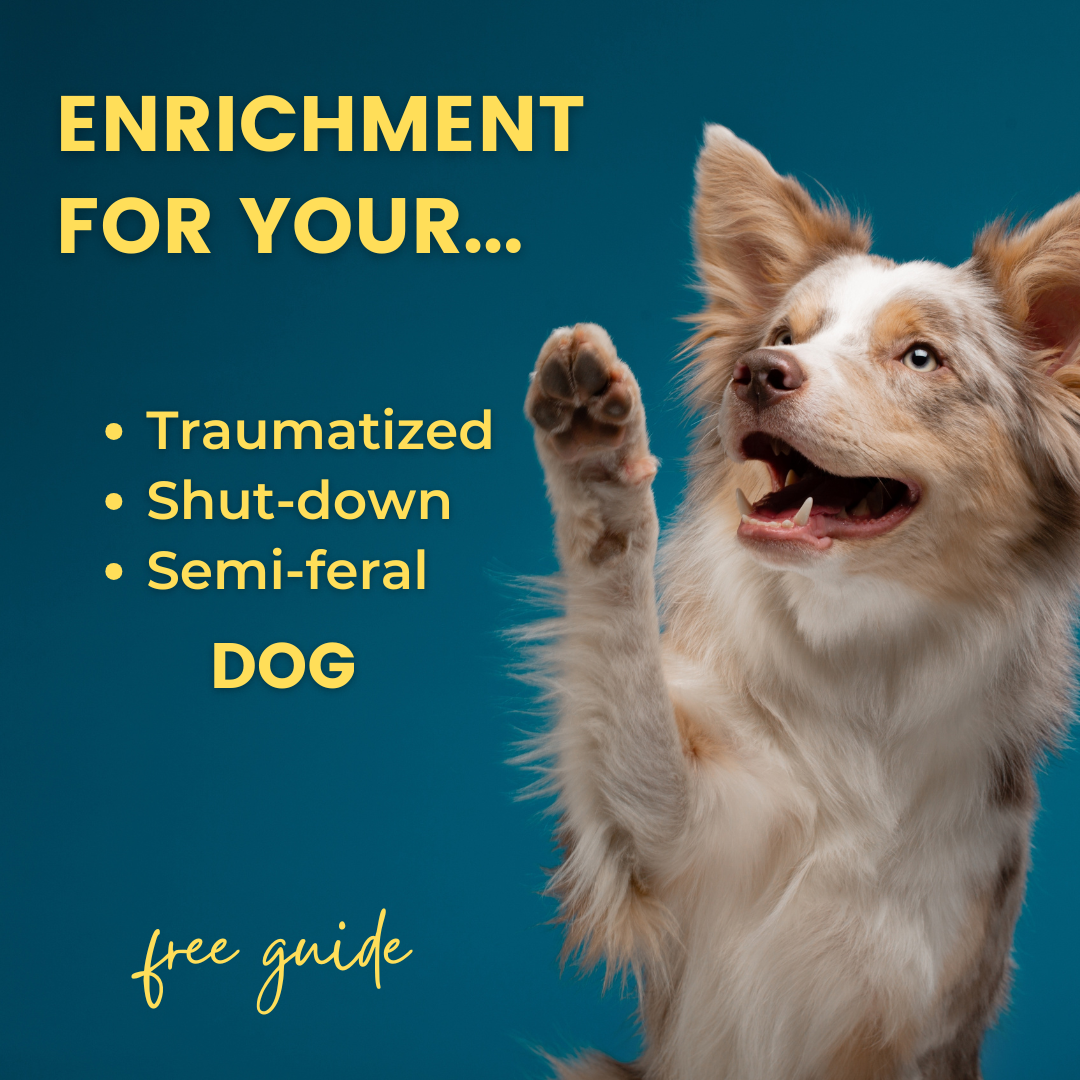Dog Too Scared To Take Treats?
Sep 19, 2022
Does your dog refuse treats? Maybe they won't take treats from your hand, or they flee if you try to toss treats to them? In this video series, I give you tips for making treats more appealing to your fearful dog.
Why Won't My Dog Eat Treats?
There are a number of reasons a dog might refuse treats. Here are things to consider:
- Illness or pain: If your dog has a poor appetite, especially if the change is sudden, see your vet ASAP. If your dog isn't physically healthy, none of the strategies here will make much difference.
- Taste preference: Your dog just might not like the treat you're using. Try a variety of treats to identify their preferences.
- You're inadvertently scaring your dog when trying to give them treats: This is more common than you might think. Behaviors that we naturally tend to do when offering treats, like bending or reaching toward our dog, can make them uncomfortable. I talk about ways we can change our behavior when offering treats to be less intimidating to sensitive dogs in the first two videos below.
- Something the treat is doing is scaring your dog: Some dogs have a startle response to the sound of things hitting the ground, including treats. Treats moving (bouncing or rolling) can also alarm a fearful dog. See the third video below if this sounds like your dog.
Problem #1: Dog Won't Take Treats From Your Hand (Or Does So Reluctantly)
It's very common for a fearful dog to be reluctant to take treats from someone's hand. This can be universal- the dog won't take treats from anyone's hand- or it can be limited to some family members, or strangers. If your dog refuses treats offered by hand, or is hesitant and stretches out to take a treat while trying to remain as far from the hand as possible, here are some possible solutions:
- Stop offering treats by hand: If your dog won't take treats from your (or someone else's) hand, or does so very hesitantly, stop trying to get them to take treats from hands. If your dog readily takes treats from your hand but not from other peoples', it's probably ok for you to continue to feed by hand- but ask others not hold out treats to your dog.
- Try other ways to offer treats: In the first video below, I show three alternatives to offering treats by hand:
- Toss treats to or behind your dog: This is often the easiest alternative to hand feeding. Toss treats to wherever your dog is, or even behind them so they can move away from you (or whomever they're reluctant to approach). In the 2nd video below I talk about how toss treats to a fearful dog that are less likely to scare them;
- Place treats on the floor, then move away: If your dogs is very comfortable being near you (or whoever is giving them treats), or if throwing treats scares them, this can be a good option. Early on with Pancake, if I needed to be near his safe space, I would drop treats into his pen and then leave the room. Now that Pancake is comfortable being near my husband in some contexts (like on the sofa), my husband sometimes places treats on the sofa next to him.
- Try out a remote treat dispenser: Products like the Pet Tutor or Treat 'n Train (formerly Manners Minder) allow you to deliver treats to your dog from a distance. However, many fearful dogs find the noises these devices make to be pretty scary. If you decide to try a remote feeder, be sure to mute all electronic noises, and evaluate your dog's response to it at a distance. For example, the first time I turned on the Pet Tutor for Pancake, I placed it in his outdoor area while he was inside. It was quickly apparent that he found the noises from the remote feeder pretty scary, so this wasn't a good option for him.
- Work with a trainer: If none of the approaches mentioned here work, I recommend having your dog evaluated by a trainer. We offer private training online, or a monthly training membership just for fearful dogs.
Problem #2: Dog Won't Eat Treats You Throw To Them
You've tried tossing treats to your fearful dog, but they are still too spooked to eat. Or maybe they sometimes eat treats you've thrown to them, but not consistently. Here are three changes you can make to your behavior that might help:
- Turn your body away from your dog: Try sitting or standing sideways to your dog, or even putting your back to them.
- Use smaller throwing motions: Use your write to flick the treat farther, without using a big arm motion;
- Move farther away: Either throw the treat from farther away from your dog, or toss the treat and then move away.
Problem #3: Dog Is Afraid of Treat Movement Or Sounds
It's not uncommon for fearful dogs to be startled by the sound of treats hitting the floor. Treats bouncing or rolling toward them can also scare them. If this sounds like your dog, here are some tips to try:
- Use a soft treat "target": Rather than toss treats onto a hard floor or even a rug, try a pillow or snufflemat. This will eliminated treat noise, and most treat movement. As a bonus, your dog will learn that the target is where they should look for treats, so they'll find them more quickly.
If you use a pillow, punch it down in the middle so that treats roll into the center of the pillow, rather than off the sides.
- Use soft treats: Really soft treats, like boiled chicken or string cheese (room temperature!), don't make much noise when they hit the floor, and don't bounce or roll much.
- Toss treats off to the side of your dog: Instead of tossing treats directly at your dog, throw treats off to the side of their location. This reduces the risk that you'll accidentally hit your dog with treats. As an added benefit, your throwing motion will be directed to the side of your dog rather than right at them, which is more tolerable to many fearful dogs.
If you have questions about treat delivery for fearful dogs, or if you've found a strategy not mentioned here that you love, we'd like to hear from you! Shoot us a message at [email protected] or share in our free Facebook Support Group.
If you're looking for more training support for your fearful pup, check out our monthly training membership, or our one-on-one training program.



